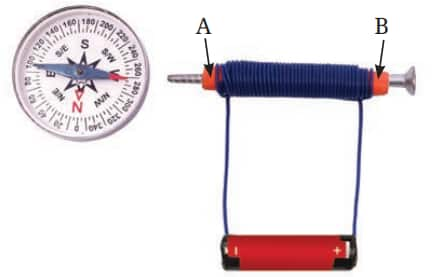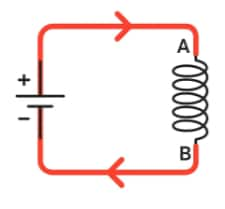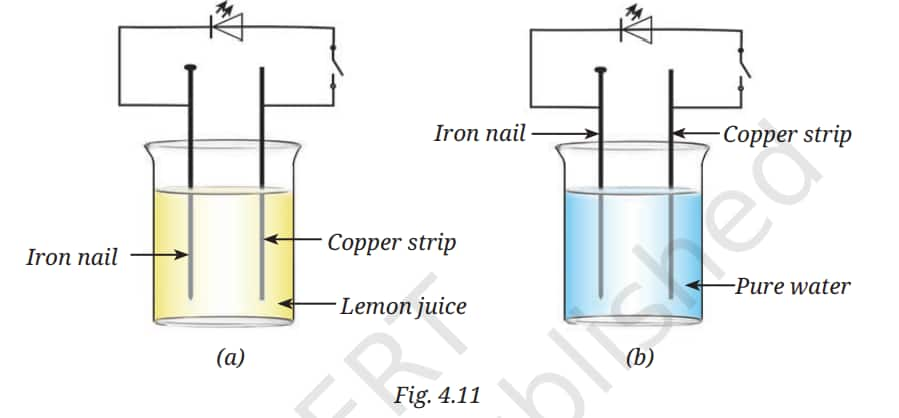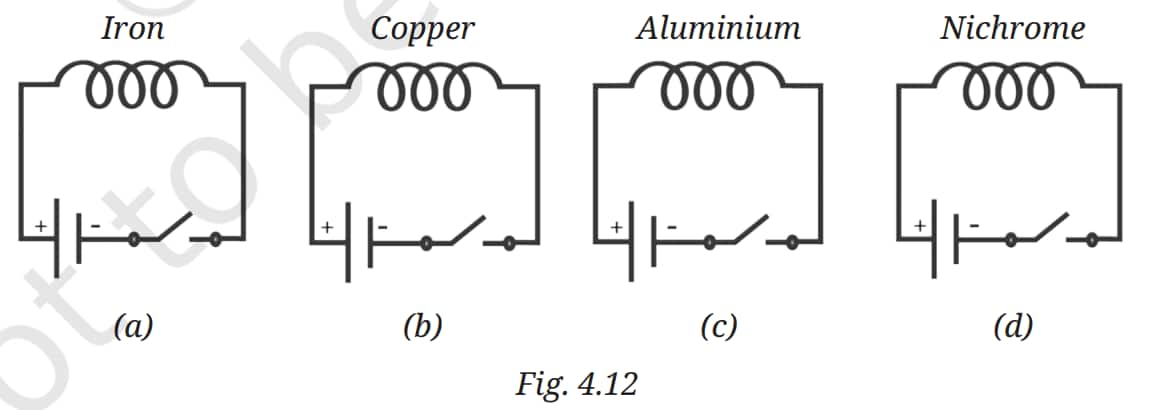NCERT Solutions for Class 8 Science Chapter 4 - Electricity: Magnetic and Heating Effects
Turning on a fan, ringing an electric bell, or recharging a cell phone - all these are interesting effects of electric current. NCERT Solutions Class 8 Science Chapter 4 - Electricity: Magnetic and Heating Effects enable students to have a clear-cut understanding of the fact that electric current generates heat and magnetism, and their extensive use. The chapter articulates the essence of the heating effect of current, the magnetic effect of current and how to make electromagnets and electric bells work in a simple step-by-step way, and therefore learning becomes simple and efficient.
This Story also Contains
- Download Class 8 Science Chapter 4 - Electricity: Magnetic and Heating Effects Question Answers PDF
- NCERT Solutions for Class 8 Science Chapter 4: Solved Exercise Questions
- NCERT Solutions for Class 8 Science Chapter 4: Discover, design, and debate
- Electricity: Magnetic and Heating Effects Class 8 Science Chapter 4: Additional Questions
- Electricity: Magnetic and Heating Effects Class 8 Science Chapter 4: Topics
- Approach to Solve Questions of Class 8 Science Chapter 4 – Electricity: Magnetic and Heating Effects
- Benefits of Electricity: Magnetic and Heating Effects NCERT Solutions
- NCERT Solutions for Class 8 Science Chapter Wise

These NCERT Solutions for Class 8 Science Chapter 4 - Electricity: Magnetic and Heating Effects are prepared by experts to provide detailed, accurate answers to all the textbook questions, including MCQs, short-answer, and long-answer questions. They not only assist students to do better on school tests such as the CBSE, but also improve the basics required in competitive tests like the JEE and NEET, where electricity and magnetism are essential subjects. With such NCERT Solutions for Class 8 Science Chapter 4 - Electricity: Magnetic and Heating Effects, students are able to practice on a regular basis, revise accordingly and gain confidence in the use of scientific concepts in real-life applications. These NCERT solutions can be looked upon as a good study tool in order to prepare well and perform well in exams.
Download Class 8 Science Chapter 4 - Electricity: Magnetic and Heating Effects Question Answers PDF
Electricity: Magnetic and Heating Effects Class 8 question answers can be downloaded and enable a student to prepare for exams in a convenient and efficient manner. These Electricity: Magnetic and Heating Effects NCERT Solutions give a step-by-step solution to all the questions in the textbook, and the key topics discussed include the heating effect of current, the magnetic effect of current, electromagnets, and electric bells. The explanations of the solutions are presented in a clear and systematic way, which ensures that the students might develop a solid conceptual background. Students will be able to update at any time with a mobile, laptop, or tablet with this free PDF, without the need to be connected to the internet. These class 8 science chapter 4 Electricity: Magnetic and Heating Effects question answers are prepared by the subject experts according to the current NCERT syllabus (2025-26), hence time-saving, improving comprehension, and helping the learners achieve improved school and competitive test performances.
NCERT Solutions for Class 8 Science Chapter 4: Solved Exercise Questions
Class 8 NCERT Solutions: Science Chapter 4 Solved Exercise Questions will give step-by-step solutions to all the questions of the textbook exercises. The class 8 science chapter 4 Electricity: Magnetic and Heating Effects question answers give guidance to the student to learn the concept of the magnetic and heating effects of electric current and to do well during exams.
Q1. Fill in the blanks:
(i) The solution used in a Voltaic cell is called ________.
(ii) A current carrying coil behaves like a _______ .
Answer:
(i) Electrolyte
The Voltaic cell contains two metal plates made of different materials and a liquid called an electrolyte, placed in a glass or plastic container.
(ii) Magnet
When electric current flows through a conductor (like a wire), it produces a magnetic field around it. This phenomenon is known as the magnetic effect of electric current. Or we can say that the current-carrying wire is behaving like a magnet.
Q2. Choose the correct option:
(i) Dry cells are less portable compared to Voltaic cells. (True/False)
(ii) A coil becomes an electromagnet only when an electric current flows through it. (True/False)
(iii) An electromagnet, using a single cell, attracts more iron paper clips than the same electromagnet with a battery of 2 cells. (True/False)
Answer:
(i) False
Dry cells are more portable than Voltaic cells because they do not leak and can be easily carried around.
(ii) True
Without current, it remains just a coil of wire.
(iii) False
More cells mean more current, leading to a stronger electromagnet which attracts more clips.
Q3. An electric current flows through a nichrome wire for a short time.
(i) The wire becomes warm.
(ii) A magnetic compass placed below the wire is deflected.
Choose the correct option:
(a) Only (i) is correct
(b) Only (ii) is correct
(c) Both (i) and (ii) are correct
(d) Both (i) and (ii) are not correct
Answer:
(c) Both (i) and (ii) are correct
Electric current generates both heat (heating effect) and a magnetic field (magnetic effect).
Q4. Match the items in Column A with those in Column B
|
Column A |
Column B |
|
(i) Voltaic cell |
(a) Best suited for an electric heater |
|
(ii) Electric iron |
(b) Works on the magnetic effect of electric current |
|
(iii) Nichrome wire |
(c) Works on the heating effect of electric current |
|
(iv) Electromagnet |
(d) Generates electricity by chemical reactions |
Answer:
|
Column A |
Column B |
|
(i) Voltaic cell |
(d) Generates electricity by chemical reactions |
|
(ii) Electric iron |
(c) Works on the heating effect of electric current |
|
(iii) Nichrome wire |
(a) Best suited for an electric heater |
|
(iv) Electromagnet |
(b) Works on the magnetic effect of electric current |
Q5. Nichrome wire is commonly used in electrical heating devices because it
(i) is a good conductor of electricity.
(ii) generates more heat for a given current.
(iii) is cheaper than copper.
(iv) is an insulator of electricity.
Answer:
(ii) Correct: generates more heat for a given current.
Nichrome is not a very good conductor (not as good as copper) — it resists current, so it heats up more for a given current.
Other options:
(i) Incorrect: Nichrome is not a better conductor than copper.
(iii) Incorrect: Cost is not the main reason.
(iv) Incorrect: "Insulator" is incorrect; it conducts electricity.
Q6. Electric heating devices (like an electric heater or a stove) are often considered more convenient than traditional heating methods (like burning firewood or charcoal). Give reason(s) to support this statement, considering societal impact.
Answer:
Electric heating devices (like an electric heater or a stove) are often considered more convenient than traditional heating methods (like burning firewood or charcoal) because:
-
Electric heat sources are less polluting; they do not emit smoke, ash, or toxic gases indoors like traditional sources of heating and thus minimise air pollution indoors and health hazards.
-
They are user-friendly: one can use them at any time and turn them off.
-
They are safer; there is reduced risk of the incidence of accidental fires, unlike open flames.
-
They are more efficient; energy can be focused on a certain place where it is required.
-
They are also portable and do not need to store any fuel.
-
There is no need to cut the trees (unlike when wood is used), contributing to the preservation of the environment.
Q7. Look at the Fig. 4.4a. If the compass is placed near the coil deflects:

Figure 4.4(a)
(i) Draw an arrow on the diagram to show the path of the electric current.
(ii) Explain why the compass needle moves when current flows.
(iii) Predict what would happen to the deflection if you reverse the battery terminals.
Answer:
(i) Draw the arrow following from the positive terminal of the cell, into one end of the coil, through the coil (from A to B or B to A, as per connection), and back to the negative terminal of the cell.

(ii) A coil develops a magnetic field around it when an electric current is passed through it. This field interacts with the needle on the magnetic compass, causing it to deflect away from the North-South direction, establishing that an electric current creates a magnetic effect around it.
(iii) If the battery terminals are reversed, the direction of current in the coil reverses. This means the polarity of the electromagnet flips—the magnetic field's direction changes, so the compass needle will be deflected in the opposite direction compared to before.
Q8. Suppose Sumana forgets to move the switch of her lifting electromagnet model to the OFF position (in the introduction story). After some time, the iron nail no longer picks up the iron paper clips, but the wire wrapped around the iron nail is still warm. Why did the lifting electromagnet stop lifting the clips? Give possible reasons.
Answer:
The possible reason could be that the electric cell became ‘dead’ or fully discharged after being connected for a long time. When the battery is drained, not enough current flows through the coil, so the electromagnet becomes too weak to lift the paper clips. The wire may still feel warm due to residual current, but it is not sufficient to generate a strong enough magnetic field.
Q9: In Fig. given below, in which case will the LED glow when the switch is closed?

Answer:
With lemon juice as an electrolyte, the LED will glow (with correct connections), because the lemon juice will permit the movement of ions to close the circuit, to permit the chemical reaction necessary in the transmission of current.
Using pure water as an electrolyte: The LED will fail to glow as a result of the fact that pure water is not a good conductor of electricity and does not contain ions to supply the current to flow.
This means that the LED will only light up using lemon juice as the electrolyte.
Q10. Neha keeps the coil exactly the same as in Activity 4.4 but slides the iron nail out, leaving only the coiled wire. Will the coil still deflect the compass? If yes, will the deflection be more or less than before?
Answer:
Yes, the coil will still deflect the compass because a current-carrying coil does produce a magnetic field. However, the deflection will be less without the iron nail. With the iron nail inside, the magnetic field is much stronger, so the compass needle moves more.
Q11. We have four coils, of similar shape and size, made up from iron, copper, aluminium, and nichrome as shown in Fig. 4.12.

When current is passed through the coils, the compass needles placed near the coils will show deflection.
(i) Only in circuit (a)
(ii) Only in circuits (a) and (b)
(iii) Only in circuits (a), (b), and (c)
(iv) In all four circuits
Answer:
All four coils — iron, copper, aluminium, and nichrome — are metals that can conduct electricity, and when current flows through any of these coils, a magnetic field is produced around them. So the correct answer is option (iv). In all four circuits, the compass needles will show deflection.
NCERT Solutions for Class 8 Science Chapter 4: Discover, design, and debate
NCERT Solutions for Class 8 Solution English Discover, Design, and Debate chapter 4 solution helps students develop their thinking capacity and their ability to apply scientific terms and concepts in real-life scenarios. It contains engaging and challenging questions and activities to develop innovative and creative thinking, and reasoning abilities to understand the heating effects and magnetic effects of electricity in a better way.
Q1. Make coils of turns 25, 50, 75, and 100. Connect them to the same cell one by one. Note the deflection in a magnetic compass placed in the same position in all the cases. Report your observations. Draw a conclusion of the effect of the number of turns of the coil on the strength of the electromagnet.
Answer:
Effect of the Number of Turns on the Strength of an Electromagnet:
The more turns you put into the coil the deflection will be the more. This implies that the greater the number of turns, the stronger the electromagnet.
This is because: The more turns, the more current loops, and this provides a stronger magnetic field.
Conclusion: When the number of turns of wire in the coil is increased, under the same conditions of the electric cell, the strength of an electromagnet is increased.
Q2. Take two thin Nichrome wires of equal length and different thickness (approximately one of these wire thicknesses to be double that of the other, say 0.3 mm and 0.6 mm). Connect them one by one in a circuit which has a switch and a cell, and allow the current to flow for 30 s in each case. Momentarily touch these wires. Which wire heats up more? Now repeat the same activity with two nichrome wires of the same diameter but of different lengths. Prepare a brief report of your activity.
Answer:
Case I: Wire of the same length and different thickness:
Observation:
The thinner wire (0.3 mm) becomes hotter than the thicker one (0.6 mm).
Reason: Thinner wire has more resistance to the flow of the electrical current, hence more heat is produced in the thinner one.
Case II: Wire of the same thickness and different lengths:
Observation:
The longer wire gets hotter than the shorter one.
Reason: The Longer the wire, the higher the resistance; hence, more heat will be generated.
Conclusion:
A thin wire and a longer wire will get hotter due to the increased resistance, and more electrical energy will be converted into heat.
Q3. Try to make an electric cell using various fruits and vegetables. Also, try with electrodes of different metals. Prepare a brief report.
Answer:
The LED could be slightly illuminated, or the voltmeter indicates a reading; this is because the juices of fruit/vegetables behave as electrolytes, and this will enable electricity to pass through.
It also works with different metals as electrodes (such as copper and zinc). The electricity generated by some fruits/vegetables is higher due to the higher acidity or presence of more ions in the juices.
Conclusion: A wide range of fruits and some vegetables can be utilised as the electrolyte in a basic electric cell, and the kind of metal used as electrodes may affect the amount of electricity that is produced.
Electricity: Magnetic and Heating Effects Class 8 Science Chapter 4: Additional Questions
Classes 8 Science Chapter 4 - Electricity: Magnetic and Heating Effects can assist students to understand the ways in which electric current generates heat and magnetism. The chapter links theory and the real world, such as the electric bulbs glowing or fans in operation due to electromagnetism. These additional questions assist the students to reinforce their knowledge of electric circuits, heating appliances and the magnetic effect of current by way of further practice and conceptual reasoning.
Q1: Paheli took a wire of length 10 cm. Boojho took a wire of 5 cm of the same material and thickness. Both of them connected the wires as shown in the circuit given in the Figure. The current flowing in both circuits is the same.

(i) Will the heat produced in both cases be equal? Explain.
(ii) Will the heat produced be the same if the wires taken by them are of equal length but of different thickness? Explain.
Answer:
(i) No, the amount of heat generated will be unequal in the two cases. Although wires are made of the same material and of the same thickness, one of them is longer (10 cm) and the other shorter (5 cm). The longer the length of the wire, the higher the resistance to the same electric current. The higher the resistance, the higher the heat produced. Thus, the wire with a 10 cm length will generate more heat compared to the 5 cm wire.
(ii)The amount of heat generated will not be equal when the wires are of the same length but are not of the same thickness. A wire that is thinner is more resistant as compared to a wire that is thicker. The more the resistance, the higher the heat. Then, when one wire is thin and the other is thick (yet of the same length), the thin wire will generate more heat than the thick one when the same current is sent through it.
Q2: Boojho made an electromagnet by winding 50 turns of wire over an iron screw. Paheli also made an electromagnet by winding 100 turns around a similar iron screw. Which electromagnet will attract more pins? Give a reason.
Answer:
More pins will be attracted to the electromagnet of Paheli. The reason is that she had 100 turns of wire, and Boojho had 50 turns, and as many more turns we make of the wire round the iron screw, the greater the strength of the electromagnet. This is because every time the wire is looped then it contributes to the total magnetic field. Therefore, the electromagnet becomes very powerful with increased turns. When the electric current is flowing through the wire, the loops combine to create a larger magnetic field, which assists the electromagnet on Paheli to grab more pins than the one on Boojho.
Q3: Paheli does not have a night lamp in her room. She covered the bulb in her room with a towel at night to get a dim light. Has she taken the right step? Give one reason to justify your answer.
Answer:
No, Paheli has not made the right step. The use of a towel to cover a bulb is unsafe since the towel may be hot due to the heat of the bulb and may ignite a fire. This may lead to a major fire risk within the room. Rather, a proper night lamp or a low-power bulb should be used to get a dim light which is safe.
Electricity: Magnetic and Heating Effects Class 8 Science Chapter 4: Topics
The fourth chapter of Class 8 Science, Electricity: Magnetic and Heating Effects, engages students with the two magical roles of electric current: the heating effect and the magnetic effect. The chapter is practical and thought-provoking since the effects are applied in common places such as electric irons, heaters, fans and doorbells.
4.1 Does an Electric Current Have a Magnetic Effect?
An electric current running through a conductor generates a magnetic field around the conductor. This phenomenon is called the magnetic effect of electric current or electromagnetism. Some of the devices that make use of this principle are electric bells, motors and magnetic cranes.
4.1.1 Electromagnets
An electromagnet is a temporary magnet produced by the passage of electric current through a coil of wire wound around a soft iron core. The strength of the magnetic varies with the turns of the coil and with the number of turns of the coil and the current. Electromagnets are useful since they can either be turned on or off, hence very convenient in industries and domestic appliances.
4.1.2 Lifting electromagnets
These are powerful electromagnets that are used in factories and scrap yards to lift heavy metallic items such as iron sheets, steel rods or scrap cars. As current passes through them, they also become magnets and hold onto metal; when the current is turned off, the load is immediately released.
4.2 Does a Current-Carrying Wire Get Hot?
The heating effect of electric current (Joule Law) comes into force when an electric current that flows in a conductor produces heat. Heat generated is a function of current, resistance and time. Examples of applications of this principle are electric heaters, toasters and fuses.
4.3 How Does a Battery Generate Electricity?
A battery transforms chemical energy into electrical energy. It is composed of one (or more) cells that generate a potential difference between terminals so that electrons can be made to flow when the device is connected in a circuit.
4.3.1 Voltaic cell
The voltaic cell is a device that generates electricity using chemical reactions involving zinc and copper plates in the presence of an electrolyte, which was invented by Alessandro Volta. This was among the earliest forms of generating continuous current.
4.3.2 Dry cells
A dry cell (e.g. in torches, clocks) is a portable, easily carried source of electricity with the electrolyte in paste form, to minimise leakage. It comprises a negative terminal made of zinc and a positive terminal made of carbon.
4.3.3 Rechargeable batteries
These are rechargeable secondary cell batteries (e.g., lithium-ion batteries, lead-acid batteries). When the battery is charging, electrical energy is being converted to chemical form, to be released back into electricity when in use. They are widely used in mobile, laptop and electric vehicles.
Approach to Solve Questions of Class 8 Science Chapter 4 – Electricity: Magnetic and Heating Effects
The chapter Electricity: Magnetic and Heating Effects is used to assist the students in understanding the fact that electric current generates heat and magnetism, and their applications in the real world. The effective way of answering the questions in this chapter is by focusing on conceptual knowledge, practical relationships, and sequential elaborations. Here's the right approach:
- Start by understanding the concepts of the magnetic effect of electric current and the heating effect of electric current because these are the two key topics of the chapter.
- It is important to remember that the magnetic effect occurs as a result of the current creating a magnetic field around a coil or wire.
- Examples such as an electromagnet and an electric bell can help you know how the magnetic effect is utilised in machines.
- Now, the heating effect is the one that arises when a current is passed through a piece of wire, and part of the electrical energy is converted to heat.
- Study the practical illustrations of heating effects, like an electric iron, a heater, a bulb, or a fuse.
- Also remember that the heating effect is proportional to the resistance, current and time in which the current passes (Joule's law).
- Draw and label circuit diagrams of devices, e.g. electric bell or an electromagnet.
- Establish what you understand about electromagnets. The higher the number of turns of wire, the higher the current, and the higher the core is composed of soft iron, the greater the strength of the electromagnet.
- Revise short concept and questions based on the direction of current flow, deflection of a compass or working of electromagnets.
- Try to relate the concepts to safety, like what happens when a short circuit occurs, and why the wires in fuses melt when there is excessive current.
- NCERT activity-based examples are worth reading as they are useful to explain how to observe the effects of current in practice.
Benefits of Electricity: Magnetic and Heating Effects NCERT Solutions
The Electricity: Magnetic and Heating Effects Class 8 question answers can easily help students prepare by giving step-by-step solutions to every question in the textbook; hence, taking a test is not a difficult task. These Electricity: Magnetic and Heating Effects class 8 question answers not only enhance the comprehension of important concepts such as the heating effect of current, the magnetic effect of current, electric fuses, electromagnets, and electric bells, but also assist the students in connecting them with the phenomena they can observe in real life. With the help of such Electricity: Magnetic and Heating Effects NCERT Solutions, students will be able to:
- Learn in brief with simplified explanations of complex concepts.
- Learn to write answers with increased precision using solutions that are well-structured.
- Lay a sound foundation in electricity and magnetism in preparation for higher classes and competitive examinations.
- Students can also go through important CBSE Class 8 Science questions in a systematic manner, which will help them reduce the pressure of the exam.
- Get access to self-study and revision resources based on a syllabus and reliable to assist with homework.
NCERT Solutions for Class 8 Science Chapter Wise
The NCERT Solutions to Class 8 Science give a step-by-step explanation of all the chapters in the new NCERT textbook (2025-26). These solutions help students to master concepts, learn effectively, and study significant subjects within a short time. Chapter-by-chapter links will allow students to find solutions to all the topics in a single location, which will help them prepare better for exams and build their scientific base.
|
NCERT Solution for Class 8 Science Chapter 4 |
Frequently Asked Questions (FAQs)
Electricity plays a vital role in daily life - it is what runs our homes, our gadgets and our industries. Learning about how it works would make us use it safely and wisely!
Magnetism has a very strong connection to electricity. The flow of the current in a wire causes the formation of a magnetic field, which is applied in electromagnets and motors.
Energy is lost in the form of heat caused by the heating effect of electric current, thereby increasing the temperature of the appliance.
Applications of electromagnets include the use of electromagnets in doorbells, electric cranes, motors, as well as loudspeakers.
Turn off the appliance and disconnect straight away. Do not touch it with any bare wet hands and tell an adult or an electrician.
A number of safety precautions are advised in order to avoid mishaps related to the heating effect of electricity. These include avoiding the use of faulty electrical equipment, making sure that wires and appliances are rated for the current they carry, keeping wires properly insulated, and using the necessary fuses or circuit breakers to prevent overload.
To experiment on the magnetic effect of current, you can conduct a simple exercise.
Pick up a straight wire and attach it to a battery, and put a magnetic compass under it. As current is passed across the wire, the compass needle gets deflected, indicating that there is a magnetic field surrounding the wire. Upon the removal of the current, the needle goes back to its initial position, which demonstrates that electric current has a magnetic effect.
Courses After 12th
Applications for Admissions are open.
As per latest syllabus. Physics formulas, equations, & laws of class 11 & 12th chapters
JEE Main Important Chemistry formulas
Get nowAs per latest syllabus. Chemistry formulas, equations, & laws of class 11 & 12th chapters
JEE Main high scoring chapters and topics
Get nowAs per latest 2024 syllabus. Study 40% syllabus and score upto 100% marks in JEE
JEE Main Important Mathematics Formulas
Get nowAs per latest syllabus. Maths formulas, equations, & theorems of class 11 & 12th chapters
